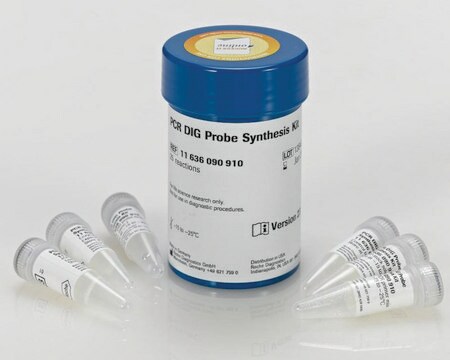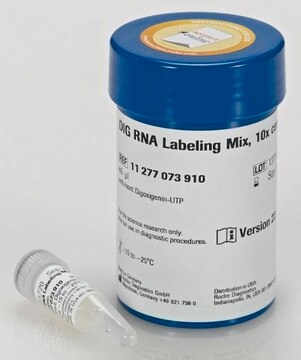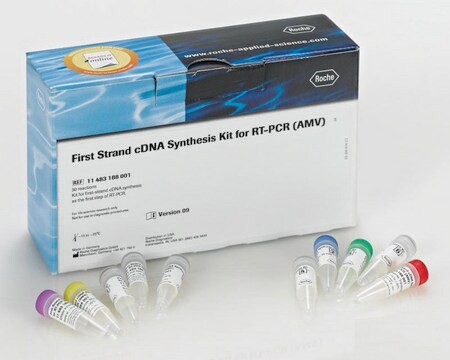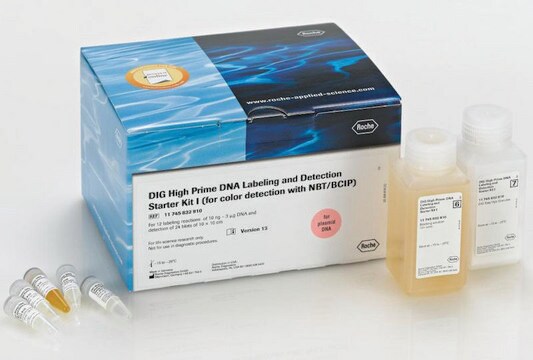11585550910
Roche
PCR DIG Labeling Mix
solution, suitable for PCR
Synonym(s):
nucleic acid labeling
About This Item
Recommended Products
form
solution
Quality Level
usage
sufficient for 2 x 25 assays (100 ul final reaction volume)
packaging
pkg of 500 μL (2 x 250 μl)
manufacturer/tradename
Roche
greener alternative product characteristics
Designing Safer Chemicals
Learn more about the Principles of Green Chemistry.
sustainability
Greener Alternative Product
technique(s)
PCR: suitable
color
colorless
solubility
water: miscible
greener alternative category
, Aligned
storage temp.
−20°C
General description
When using higher concentrations of DIG-deoxyuridinetriphosphate (dUTP) what is supplied with the PCR DIG Labeling Mix, the yield of the PCR product may be reduced, but however, the label intensity and the molecular weight of the PCR product is increased.
Application
PCR DIG Labeling Mix has been used in the preparation of digoxigenin-labeled riboprobes during the in vitro transcription step.
Quality
Physical form
Other Notes
also commonly purchased with this product
Storage Class Code
12 - Non Combustible Liquids
WGK
nwg
Flash Point(F)
does not flash
Flash Point(C)
does not flash
Choose from one of the most recent versions:
Already Own This Product?
Find documentation for the products that you have recently purchased in the Document Library.
Customers Also Viewed
Articles
Digoxigenin (DIG) labeling methods and kits for DNA and RNA DIG probes, random primed DNA labeling, nick translation labeling, 5’ and 3’ oligonucleotide end-labeling.
Our team of scientists has experience in all areas of research including Life Science, Material Science, Chemical Synthesis, Chromatography, Analytical and many others.
Contact Technical Service





